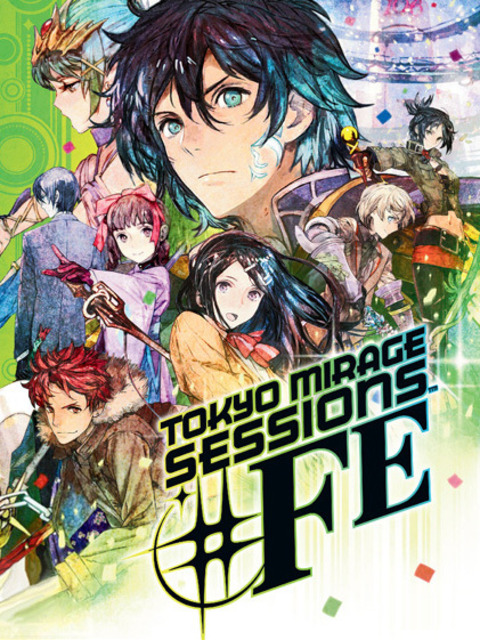Tokyo Mirage Sessions #FE Review
Three years ago Nintendo announced a crossover project with ATLUS, combining their Fire Emblem franchise with the latter’s Shin Megami Tensei franchise. Two years later, and another trailer reveals that what many thought would be one of the best strategy game crossovers is now a new, independent, title. Tokyo Mirage Sessions #FE is final product of a three-year long campaign to create something new from older influences, but the end result isn’t exactly satisfying.
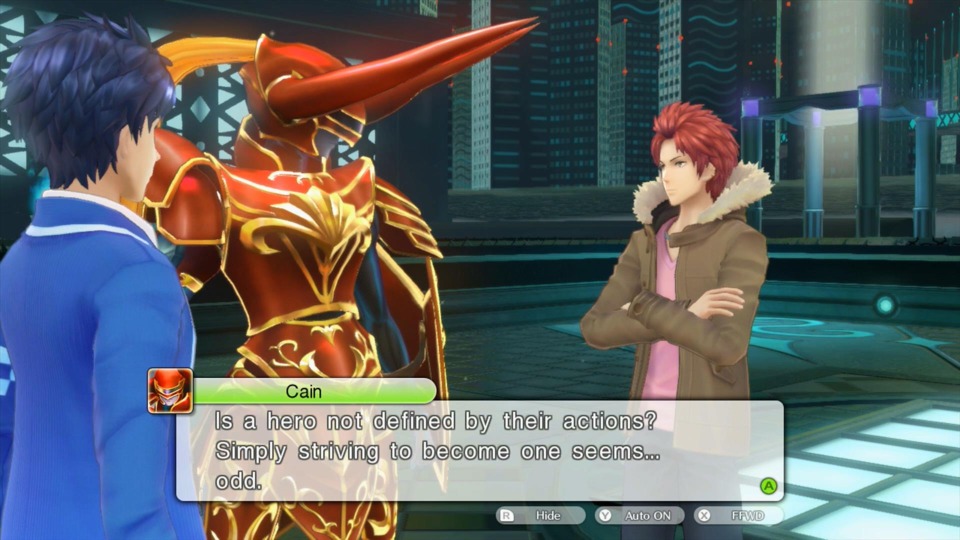
At an opera show in Tokyo, creatures known as mirages invade and spirit away almost all of the cast and patrons save for a young Tsubasa Oribe. Five years later, Tsubasa takes part in an idol try-out exhibition that is overrun by a similar group of mirages. Tsubasa’s friend (and the player character), Aoi Itsuki, runs to her aid and the two awaken as Mirage Masters, individuals with extraordinary creative talent that can harness the strengths of mirages for themselves. With their powers awakened, Itsuki and Tsubasa join the Fortuna Entertainment talent agency, working with other talented youth as idols while trying to stop a mirage invasion of Japan. Along the way to repel the sinister mirages from their home, they must master the talent and skill needed to survive in the Japanese entertainment industry.
Tokyo Mirage Sessions’ story is potentially its weakest element. Despite the focus on entertainment and youth culture, these elements really don’t mix well with the “save the world” plot that’s going on behind the scenes of everything. Mirages are attracted to “performa,” a manifestation of human talent, and humans with abnormally large amount of performa can become mirage masters. Yet, a mirage can also take over a human with strong performa or devour them to drain their performa. Despite the various ways a mirages can get their performa fix, almost every single boss mirage chooses to take over an individual and run into a dungeon called an “idolasphere,”and remain there until Tsubasa overcomes whatever new talent challenge she’s faced with. One boss after another, the same scenes play out. While these events sort-of mirror how dungeons worked in ATLUS’ Persona 4, the characters lack the actual depth that made Persona 4 good; instead, what you have in Tokyo Mirage Sessions is an over-the-top approach to explain why there’s a reason for these dungeons to exist, and it’s a pretty poor one.
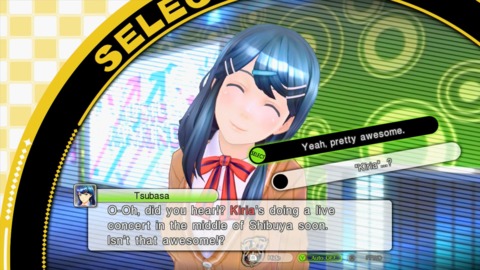
On top of its poorly constructed story, the Characters in Tokyo Mirage Sessions have about as much depth a thin piece of cardboard. Itsuki, the main character, is an attempted self-insert for the player. He lacks any particular talent or standout quality and comes off as boring against the rest of the cast and their ridiculous mannerisms. It’s not like any of the other characters are well-defined or explored, though. Tsubasa, the female lead, is a rabid idol fan who turns into an overnight success in just about everything she does. Each chapter of the game’s story is meant to follow Tsubasa’s growth as an idol, but “growth” ends up being little more than some innate talent Tsubasa never knew she had that instantly puts her near the top. In a matter of hours she goes from being a blabbering, line-forgetting klutz to master actor, able to bring her director to tears. The story has a certain level of ridiculousness to it but, but because of how often it tries to take itself seriously it feels like a jumbled mess. It rides the line between over the top ridiculousness and serious story, when it should have just picked one or the other (ridiculous having been the stronger option).
For a story set in the world of entertainment and creative industries, it does very little to actively explore the hardships and challenges actors, idols, and other creative types face. Rather than illustrate how the entertainment industry works, Tokyo Mirage Sessions is more comfortable exploring comedic episodes in its characters’ lives and pushing its female lead onto a pedestal of perfection.
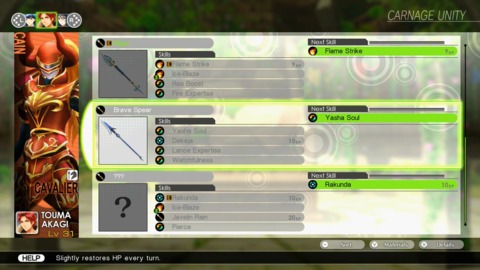
Surprisingly, Tokyo Mirage Sessions’ gameplay is its best aspect. Almost all of the game’s RPG and combat elements are pulled from older PlayStation 2-era Shin Megami Tensei titles, with a few Fire Emblem gimmicks added in for flair. Skills are inherited through equipped weapons. Based on how much a character participates in combat will determine how much experience their weapon will gain. Each weapon has four skills that the character can learn permanently, but can later be leveled up to gain a fifth. By limiting the skills slots on the characters the game encourages creative thinking. Characters aren’t stuck on a single track to getting stronger in combat, and instead how characters grow skill-wise is left up to the player.
Combat is rather fast-paced. Tokyo Mirage Sessions draws a lot from the Shin Megami Tensei press-turn system for combat by rewarding weakness exploitation. Rather than give the player an extra turn though, it starts a combo called a session. Sessions are the main way to deal damage, and if done right can end battles off of one or two attacks. Certain weapons give skills that trigger when another skill exploits a weakness, which means that players should look to gain session skills that benefit their team composition, but often times you don’t need to worry about it, and simply adding every session skill you gain will benefit you. Rarely did a character ever have to delete one session skill to learn a new one. The session system is interesting, but its actual execution is a little underwhelming. Despite being fun and rewarding to use, it’s little more than automated flare. It gets boring seeing sessions go on over and over again, and there’s no real way to speed the process up.
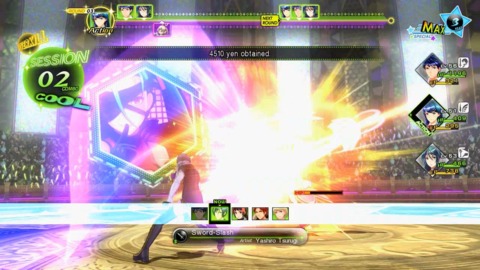
The idolasphere dungeon designs are rather well done, though. Each dungeon has its own unique look and system of puzzles to it that keeps them fun and engaging. Visuals range from an outlet mall to a classical Japanese-style mansion, typically with each dungeon having something to do with the mirage that the cast is trying to take down. The idolasphere puzzles are widely varied, two notable ones have you helping a group of mirages prepare for performance by assisting in the set up the stage and getting scripts to the actors. Another is a number puzzle, where you have to decipher digits into room locations to find the end. Every puzzle is engaging, and requires dedication from the player to be solved. Some puzzles have time limits, some have you reaching for a pen and paper, but either way the dungeon layouts and puzzles are a high point in Tokyo Mirage Sessions’ design.
he game’s visuals are all over the place. Dungeon and environment designs look great, mostly because of how varied they are. The mirage designs, particularly those of the cast members, also look good, and give off the “other worldly” feel that the team was probably shooting for. The human character models are a bit lacking, though. Emotions are carried across by overreaction. Mouths often go widely agape and stay that way through dramatic pauses (or because of bad loading times). Character movement in some cutscenes feels stiff, and sometimes brings about an uncanny valley-vibe. Tsubasa’s default animation for surprise is to flail her arms about and continually shift her eyes from left to right in a manner that feels like it was animated in a very short amount of time, for example.
On top of the animations though, there’s a lot of model inconsistency. Nintendo took a lot of strides to make sure Tokyo Mirage Sessions passed the ESRB with a “T” rating, which included altering models and cutscense, changing dialogue and scripts, and altering parts of the story. While the parts in the story changed don’t really change the narrative, and they actually brought the vocal cast back in to rerecord the altered lines of the English script in Japanese, some of the model alterations look like a second-rate last minute job. Removed swimwear costumes still exist in special attacks and in cutscenes, there’s weird censorship clouds on certain boss characters in pre-rendered scenes that aren’t present on their in-game models, and there's odd body-paint style clothing that is meant to cover up skin-showing costumes that just looks bad. Top this off with a myriad of other translation issues, like lacking subtitles for dialogue in combat, and it’s hard to understand why some areas of the game got so much attention from the localization process while other things were skipped over.
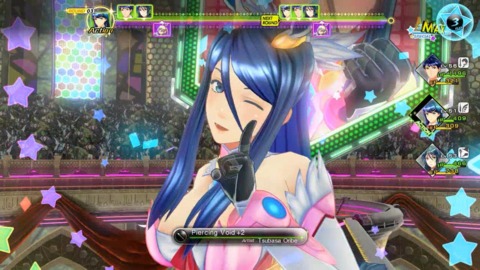
In contrast to the visuals, the audio of Tokyo Mirage Sessions is surprisingly good. Toting that having one of Japan’s bigger music industry publishers would be working on the vocal portion of the soundtrack wasn’t just for show. Many of the characters have at least one or two vocal tracks and the overall range of styles between them is nice. To top it off, the actual in-game soundtrack isn’t that bad either, and there's a lot of variety. The themes of the many idolasphere dungeons differs greatly from the more relaxed music used when walking around the city. The music often matches the tone of the game. Bubbly pop plays during comedic moments and less serious cutscnes, while slightly more stressful tracks play when issues heat up or the tension gets thick.
Tokyo Mirage Sessions is a real mixed bag. Its gameplay, dungeon design, and music is all top-notch. It's enjoyable to play and explore, but it’s all held back by the myriad of issues with everything else. A poorly constructed and goofy story with bland and unexplored characters sets an oddly appropriate backdrop for the various visual hiccups that the game has through its awkward animations and, what seems to be, last-second model changes. This isn’t a game for Persona fans, Shin Megami Tensei fans, or Fire Emblem fans. Tokyo Mirage Sessions is meant to be its own thing, but it drops many of its most important aspects. The WiiU is starved for classic JRPG titles, and while Tokyo Mirage Sessions certainly isn’t the worst, it’s far from being the best. If you can get past the slogging story, then maybe Tokyo Mirage Sessions is the WiiU RPG for you.
